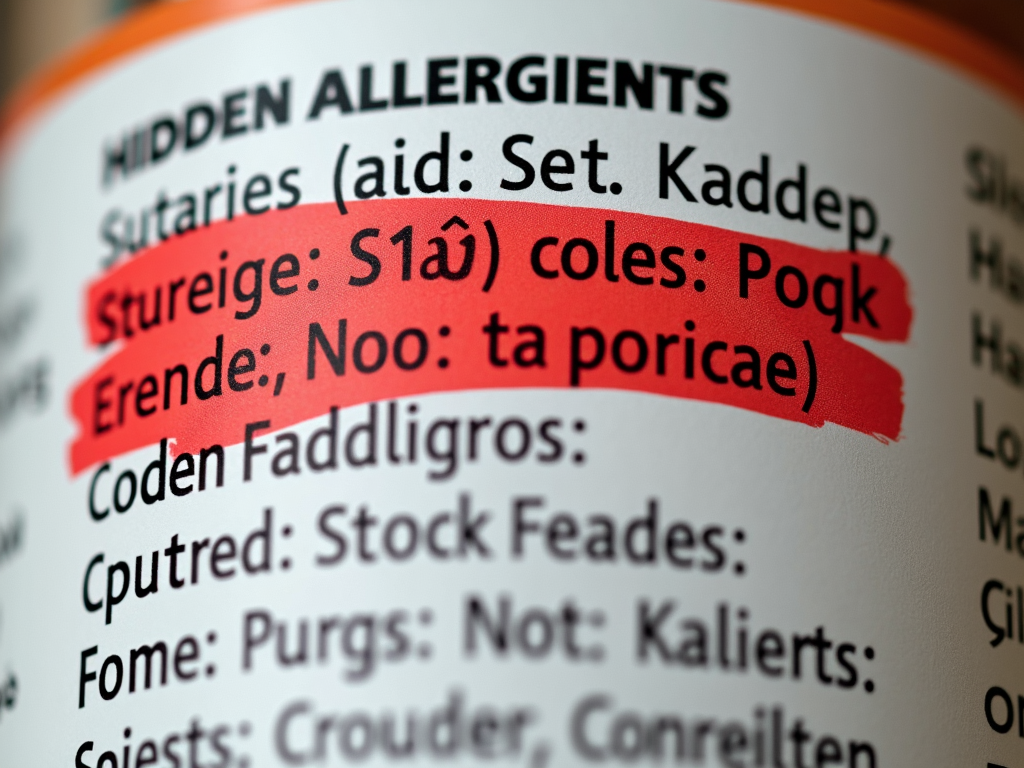Overview
Hidden allergens in food can be a serious concern for people with food allergies, especially children. In this article, we'll discuss what hidden allergens are, how to spot them in food, and how to create safe meal plans for allergic children. We'll also talk about dietary management for FPIES, a rare but serious food allergy.
What are Hidden Allergens?
Hidden allergens are ingredients in food that can cause an allergic reaction but are not clearly labeled or are present in small amounts. They can be found in processed foods, restaurant meals, and even in homemade dishes. Hidden allergens can be a serious concern for people with food allergies, as they can cause severe reactions, including anaphylaxis.
Learn more about food allergies from the American Academy of Allergy, Asthma & Immunology.

Spotting hidden allergens in food requires careful attention to food labels and ingredients. Here are some tips to help you spot hidden allergens:
- Read food labels carefully: Look for ingredients that may contain allergens, such as "natural flavors" or "spices."
- Check for cross-contamination: Make sure that food is prepared in a clean environment and that utensils and surfaces are not contaminated with allergens.
- Ask questions: If you're eating out or buying food from a restaurant, ask about the ingredients and preparation methods.
Get tips on meal planning from the Food Allergy Research & Education organization.
Creating Safe Meal Plans for Allergic Children
Creating safe meal plans for allergic children requires careful planning and preparation. Here are some tips to help you create safe meal plans:
- Identify safe foods: Make a list of foods that are safe for your child to eat and avoid foods that contain allergens.
- Plan meals in advance: Plan meals and snacks in advance to ensure that your child has safe options available.
- Prepare meals at home: Preparing meals at home can help you control the ingredients and avoid cross-contamination.

Dietary Management for FPIES
FPIES (Food Protein-Induced Enterocolitis Syndrome) is a rare but serious food allergy that affects children. It can cause severe vomiting, diarrhea, and dehydration. Dietary management for FPIES involves avoiding trigger foods and introducing new foods slowly and carefully. Here are some tips for managing FPIES through diet:
- Identify trigger foods: Work with your child's doctor to identify trigger foods and avoid them.
- Introduce new foods slowly: Introduce new foods one at a time and monitor your child's reaction.
- Keep a food diary: Keep a food diary to track your child's symptoms and identify patterns.
Personal Insights
As a parent of a child with food allergies, I know how challenging it can be to navigate the world of hidden allergens. Here are some personal insights and experiences that may help:
- "I always read food labels carefully and ask questions when eating out. It's better to be safe than sorry." - Sarah, parent of a child with peanut allergy
- "I prepare most of my child's meals at home to ensure that they're safe. It's a lot of work, but it's worth it." - John, parent of a child with FPIES.
Summary
In conclusion, hidden allergens in food can be a serious concern for people with food allergies, but by following the tips and strategies in this article, you can create safe meal plans for allergic children and manage FPIES through diet. Learn more about food allergies and meal planning by checking out our recommended readings.
Discuss Here